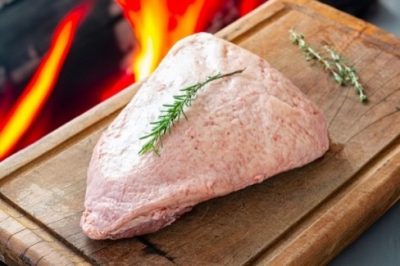Written by UConn Dietetics Masters student Anna Barbosa
Have you heard of beef tallow? It may sound fancy, but it is actually a cooking fat that has been around for a very long time. It is making a big comeback in kitchens today! Let’s learn more about it!
a cooking fat that has been around for a very long time. It is making a big comeback in kitchens today! Let’s learn more about it!
What Is Beef Tallow?
Beef tallow is a type of fat that comes from cows. It is made by gently heating beef fat until it melts, then straining out any solid bits. When it cools down, the tallow becomes creamy and solid. For centuries, beef tallow has been used for cooking, baking, making candles and soap, and even as a skincare ingredient.
How Did It Go Out of Style?
Beef tallow used to be a common cooking fat in homes and restaurants, especially for frying. But starting in the 1950s and 60s, it began to fall out of style as concerns grew about the possible connection between saturated fat and heart disease. Public health campaigns encouraged people to swap animal fats for vegetable oils, which within a healthy diet, can be healthier alternatives.
Why Are People Using It Again?
The renewal in the popularity of beef tallow seems to be linked to misinformation about seed oils online. Many health influencers have called seed oils inflammatory (stimulates an immune response in the body) and urged people to reach for the more “natural” beef tallow instead to “avoid extra chemicals” that were thought to be present in seed oils. There is not much evidence to support claims that seed oils are inflammatory; in fact, evidence suggests quite the opposite. This worry about chemicals in seed oils may have originated from the fact that sometimes oils are chemically extracted from seeds using solvents, but the solvents do not remain in the final product and pose no harm to us.
Additionally, the word “natural” can be very misleading. In fact, the term does not have an exact legal definition, leading companies to use the term in ways that can be very misleading.
Is Beef Tallow Healthy?
Beef tallow is high in saturated fat, which is a type of fat that should be used in moderation for heart health.
Overall, it may be better to choose sources of fat that are liquid at room temperature. These are rich in unsaturated fats which can be beneficial to heart health due to anti-inflammatory properties. These would include avocado oil, sunflower oil, olive oil, and various other seed oils.
As with any fat or oil, the key is balance. The occasional use of beef tallow can fit into a healthy diet of fruits, vegetables, complex grains and low-fat dairy, but beef tallow should not be your go-to source of cooking fat.
Reference: https://hsph.harvard.edu/news/beef-tallow-not-a-healthier-option-than-seed-oils/
This material is funded by UDSA’s Supplemental Nutrition Assistance Program (SNAP).
This institution is an equal opportunity provider.